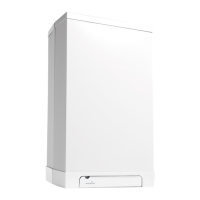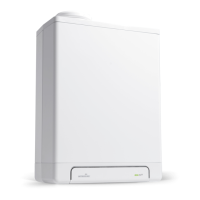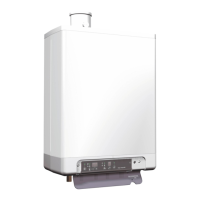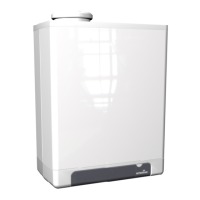Intergas Heating Ltd
33
7.5.1 Frost protection
• To avoid freezing of the condensate drain pipe the appliance must be
installed in a frost-free area.
• To avoid freezing of the appliance it is equipped with frost protection. If the
temperature of the heat exchanger becomes too low, the burner switches on
until the temperature of the heat exchanger is sufficient. If there is a possibility
of the installation (or part of it) freezing, an (external) frost thermostat must be
installed at the coldest point of the return pipe. This must be connected in
accordance with the wiring diagram (See chapter 13).
Note
If an (external) frost thermostat has been fittted to the installation and connected to
the appliance, this will not be active when the appliance is switched off at the
operating panel (
-
on service display).
7.6 System Shutdown
Drain the appliance and the system when the mains
voltage has been disconnected and there is a chance of
freezing.
1. Drain the appliance using the filling/drain tap.
2. Drain the system at the lowest point.
3. Close the main valve for the cold water supply to the boiler.
4. Drain the appliance by disconnecting the domestic hot water connections
underneath the appliance or opening hot water taps.
7.6.1 Frost protection
• In order to avoid freezing of the condensate discharge pipe, the appliance should
be installed in a frost-free room.
• In order to avoid freezing of the appliance (heat exchanger), it has an appliance
frost protection. When the temperature of the heat exchanger drops to 5ºC, the
burner will be activated and the pump will start running until the temperature of the
heat exchanger reaches10ºC.
• When the system (or a part thereof) can freeze, a frost thermostat should be
installed in the area to be protected. Connect this according to the wiring diagram.
See § 11.2.
Note!
The external frost thermostat is not active when the appliance has been switched
off at the operating panel or when the mains voltage has been interrupted.

